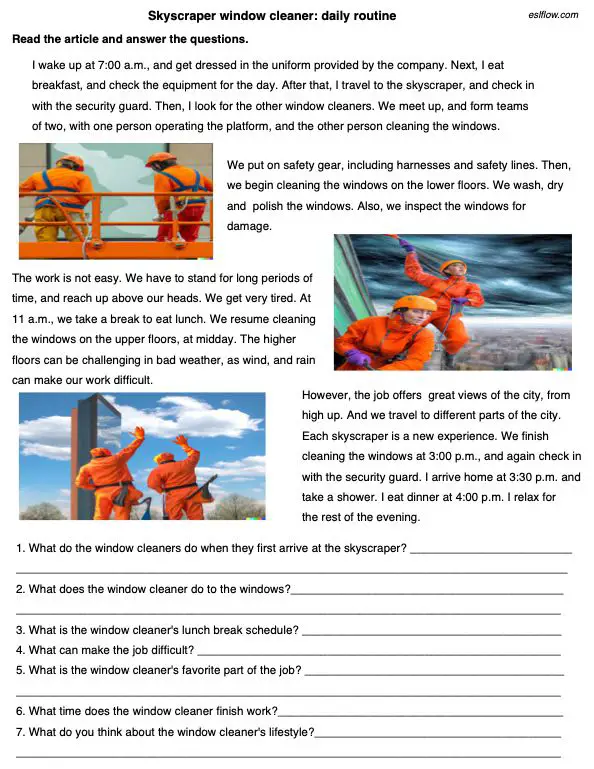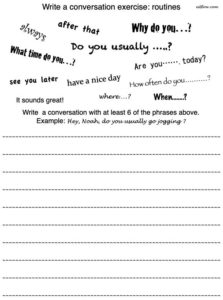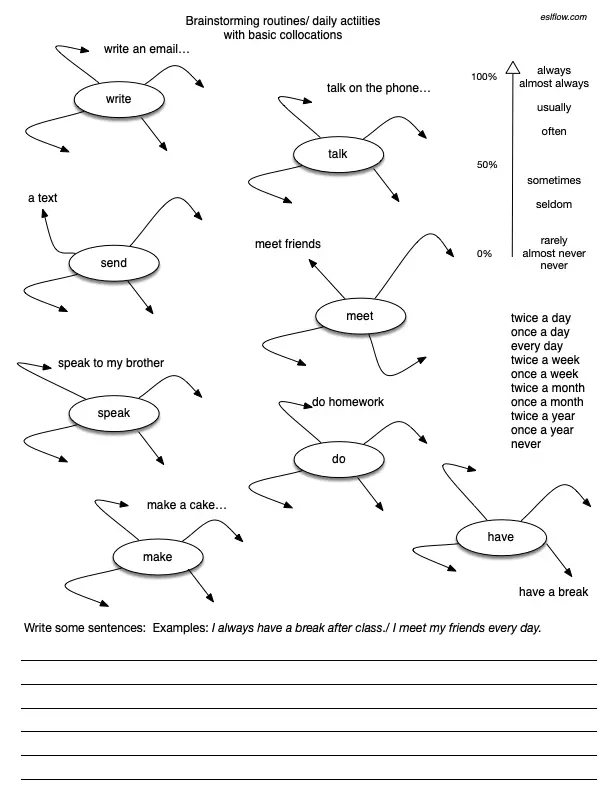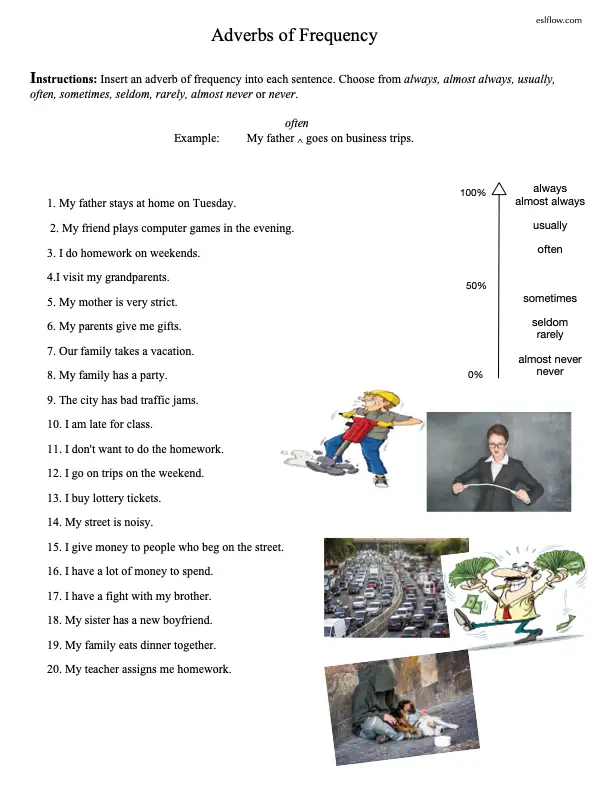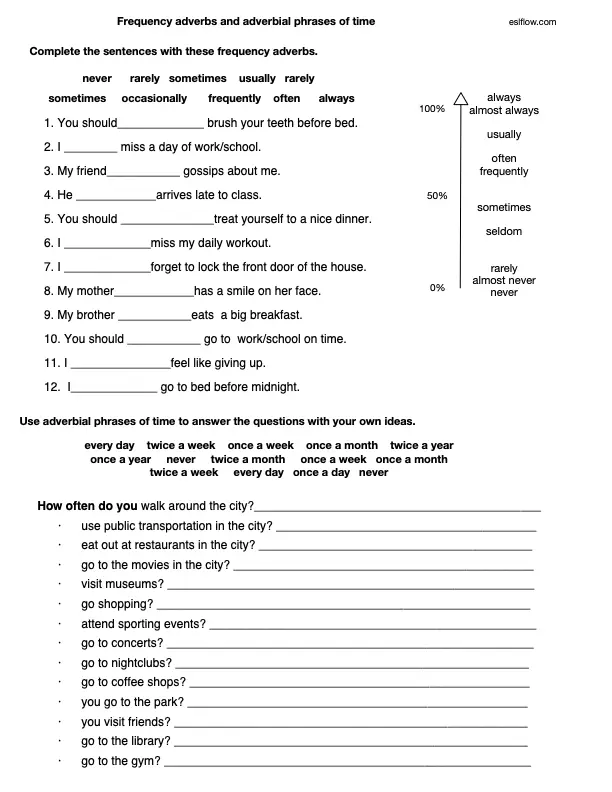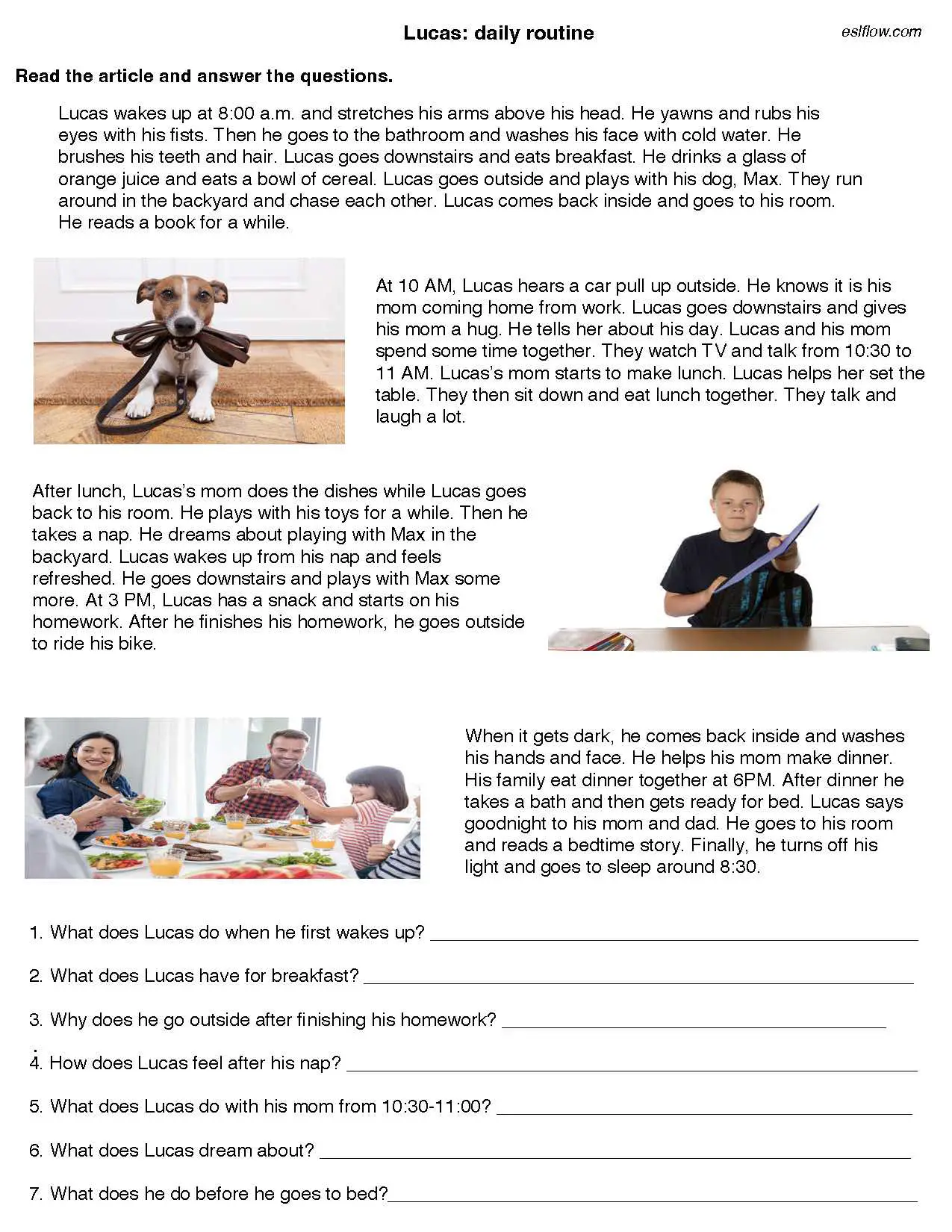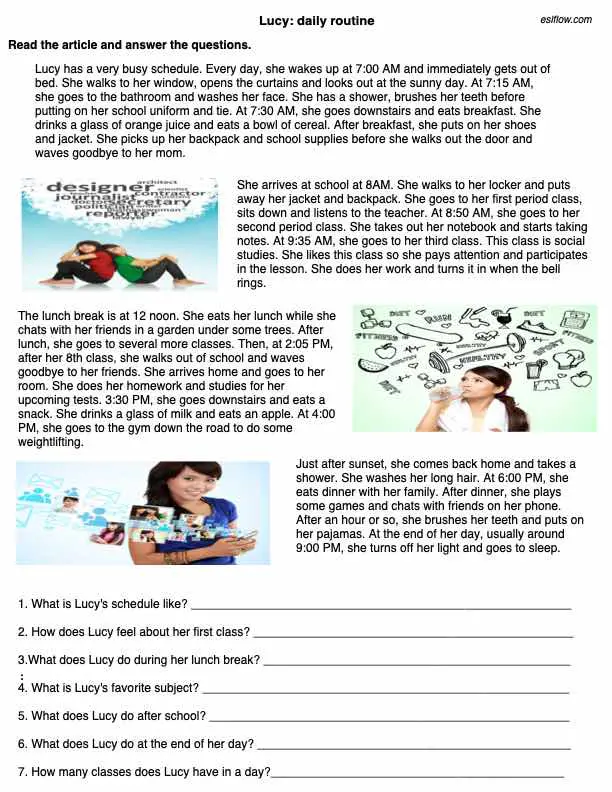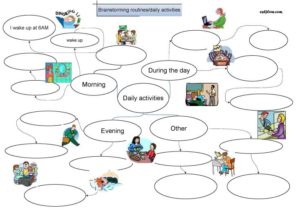Daily routines and schedules
Daily routines and schedules is a popular topic focus for teaching the present simple, adverbs of frequency and adverbial phrases of time. It’s also a fairly easy topic for elementary students, though it can be adapted for higher levels.
1 Daily routine of a skyscraper window cleaner
Each of these exercise get a bit more advanced. This is a day in the life of a guy who cleans the windows of skyscrapers.
Subscribe to Eslflow
Subscribe to get full access to the latest and best resources from eslflow.com. There are no ads in the newsletter and you will receive entertaining, high quality, and up-to-date teaching resources regularly. Also, if you take out a paid subscription, you can download large collections of PDF, audio and video materials in zip files.
2 Write a conversation exercise: routines and daily activities with dialogue and audio for a listening exercise
Write-a- conversation exercises work really well for many topics including routines and daily activities. This present simple exercise focuses on the language used for talking about routines and daily activities.
Routines and daily activities (PDF)
(YouTube video gap fill version)
3 Brainstorming routines and daily activities
A brainstorming exercise as an icebreaker or introduction to a class talking about routines.
4 Adverbs of frequency
This is a useful and easy activity that introduces students to adverbs of frequency.
5 Adverbs of frequency and adverbial phrases of time
This is another exercise for expanding students’ use of adverbs of frequency and adverbial phrases of time.
6 Elementary daily routine reading comprehension: a boy
This is an elementary present tense reading/listening comprehension exercise about a boy’s daily routine. It includes basic prepositions for talking about time, and basic transition words for describing a routine (as do the other reading exercises below).
7 Elementary daily routine reading comprehension: a girl
This is a little more advanced than the exercise above. It follows “a day in the life” of Lucy.
Related resources
8 Likes and dislikes language exercises
4 Online Shopping Listening/Speaking and Vocabulary Exercises
9 Super Elementary Speaking Exercises
5 Elementary Create a Conversation Exercises for Speaking Classes
5 Elementary Conversational Expressions Exercises
5 First Day Activities for an ESL Class
10 Really! Elementary ESL classroom icebreakers
Essential Speaking Activities for ESL Classes
12 Great Icebreakers to Start a Class
8 Invitation and Request Dialogues for Everyday Scenarios
ESL Listening Activities Guide
8 Daily routine or “a day in the life” of a celebrity
This reading is getting more advanced again, and actually gets closer to a discussion activity.
9 Brainstorming routines/daily activities
An older elementary ESL exercise for brainstorming language to describe routines & daily activities in the present tense. Students can brainstorm individually, in groups, or as a class. Students use the verbal and visual cues to fill in the worksheet.
Brainstorming routines and daily activities (PDF)
10 Do or Make ?? collocations exercise for daily routines (with answers)
Students match the verbs “do” or “make” with the nouns in the center of the worksheet.Then they match the collocations to the appropriate pictures. Once they have done this they use the collocations and their own ideas to write sentences at the bottom of the page
